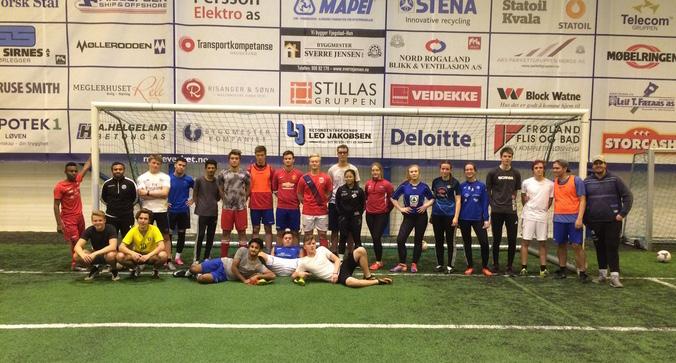
4 minute read
Norway
by Theilgaard
Project Partner: Haugeland upper Secondary School, Haugesund
NORWAY
Advertisement
State of the art
Our public school is divided into three levels. Year 1-7 is our primary school with pupils aged 6-13. Year 8-10 is our lower secondary school with pupils from the age of 13 to 16. Both of these levels are free and compulsory. We also offer a preschool/kindergarten for children from the age of 1 till 6. This is not free or compulsory even though the majority of children attend this. Our upper secondary school is mainly divided into two. One three year theoretical education, preparing the students for university etc. The second one is a two year long vocational education qualifying the students for a two year long apprenticeship in a relevant company.
upper secondary level 1 at school
upper secondary level 1 at school upper secondary level 2 at school upper secondary level 3 at school
Supplementary programme for general university admissions certification
upper secondary level 2 at school upper secondary level 3 at school General university admissions certification
Supplementary programme for general university admissions certification
Vocational competence
In-service training at a training establishment
In-service training at a training establishment special paths Craft- or journeyman’s certificate
48 | The COURAGE Project
This is a schematic overview of the Norwegian upper secondary education:

We also offer some other educational courses, but the two mentioned are the main ones. Our upper secondary school is not compulsory, but everyone has the right to go to upper secondary school.
In Norway about 70% of students complete upper secondary school. This figure shows that Norway must do something so that more students complete and pass upper secondary education. Students dropping out of upper secondary school often end up as NEETs. It is therefore important for the government and for the individual student that the drop-out rate is as low as possible. To ensure this we need to have a relevant education and a school that includes everyone socially.
Haugaland upper secondary school
Haugaland upper secondary school experience the same challenges that we have nationwide. The school has implemented several steps to decrease the dropout rate and make the students complete the education they have started. Some of these steps are:
> Systematic student development:
Systematic student development is a practical teaching method enabling mentors / teachers “see” each student, adapting teaching and giving the student ample room for student participation.
> Study Centre (adapted education, learning strategies, vocational orientation)
According to the Education Act (§ 1.3), all students have the right to a customized and adapted training according to their needs. It is up to each school and their teachers to find the best solutions for how the students educational needs are met.
Haugaland Secondary School decided a few years ago that the school would create a study centre where the main objective was to provide customized and adapted training for students who struggled with their development of basic skills within numeracy and literacy.
> Follow-up service (OT)
The Norwegian Education Act requires each county to have a follow-up service for young people between 16 and 21 who are not in edu-
The COURAGE Project | 49
cation or employment.
Rogaland County Council has organized the follow-up service by employing and placing OT supervisors (follow-up supervisors) at the largest upper secondary schools in the district. Haugaland upper secondary school is one of those schools where there is an OT supervisor.
> Alternative combinations of school and work practice
As mentioned earlier, the average progress for a student is two years in school and two years as an apprentice. While this programme works for most students, it is not successful for all students. Haugaland has had good experience with combining school and workplace practice for students who are not motivated for being
full time at school.
> Reading program
As a result of the STAY ON project, Haugaland deceided to introduce a reading project in 2014/15. The students start the day in their respective classrooms/woorkshops by reading a book, magazine, comic stip etc. – they read something they enjoy, not homework, and not from a computer or ipad. The aim of the project was to improve the students reading skills.
> MOT
In our pursuit of a good strategy and actions to stop bullying/harassement of students at our school, we chose to become a MOT school.
The three pillars of the MOT programme is: • Courage to care • Courage to live • Courage to say no

50 | The COURAGE Project
MOT`s values emanate from:
- The desire to help people to take care of each other and make conscious choices - The desire to reach goals by focusing on values - The conviction that courage is a very important characteristic
MOT`s vision is a warmer and safer environment to grow up in.
> Physical training and activity to increase motivation
We have set up different school tournaments in sports` activities like football, and we engaged in a cooperation with a local football club,
Haugar, in connection with the COURAGE project, in order to try and see how these activities would influence the school achivements and the well-being and prosperity of some of our students.
These are some of the activities our school has implemented to include our students in the society and to stay longer in school. Our case studies examine the two latest mentioned activities closer.

The COURAGE Project | 51










